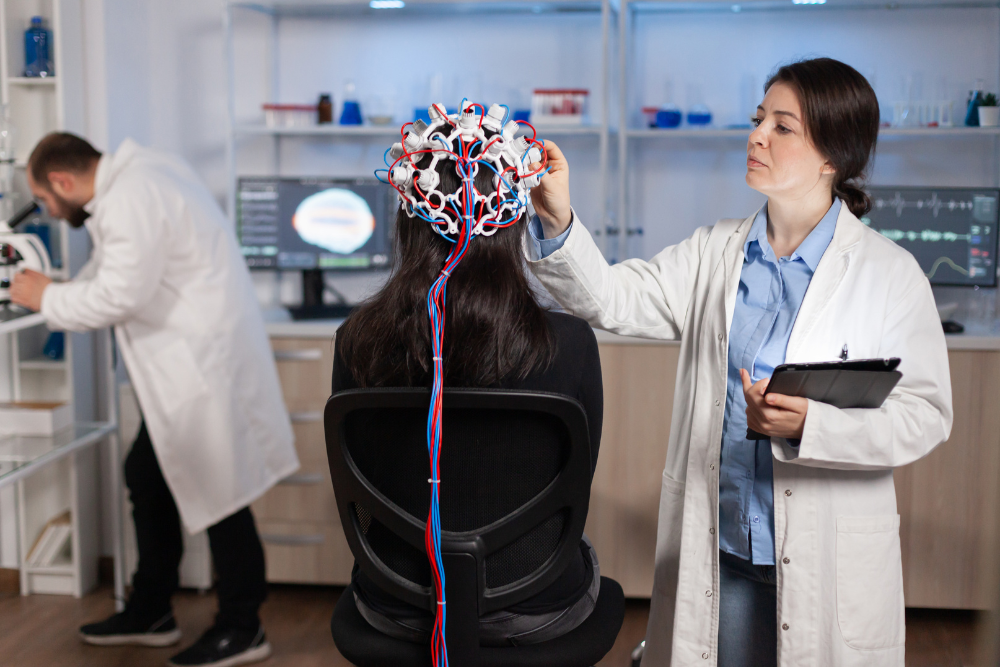Overview
Anesthesiology is a vital medical specialty focused on managing pain and providing comfort during surgery and other medical procedures. Our specialized physicians bring extensive training and expertise in administering different types of anesthesia, monitoring your vital signs throughout the process, and ensuring your smooth recovery.
Conditions We Address
- General anesthesia: Providing controlled unconsciousness and pain relief during surgery.
- Regional anesthesia: Blocking pain in specific areas of the body while you remain awake.
- Spinal anesthesia: Numbing the lower body through an injection in the spine.
- Epidurals: Providing pain relief during childbirth.
- Sedation: Inducing relaxation and reducing anxiety for minimally invasive procedures.
- Pain management: Managing chronic or post-surgical pain through various techniques.
Common Procedures We Support
- Cardiac surgery
- Orthopedic surgery
- Neurosurgery
- General surgery
- Gynecological surgery
- Plastic surgery
- Dental surgery
- Pain management procedures
Why Choose Parvathy Hospital for Anesthesiology?
- Experienced and compassionate team: Our board-certified anesthesiologists possess extensive expertise and a genuine commitment to your well-being.
- Advanced technology and monitoring: We utilize cutting-edge equipment and techniques to ensure your safety and comfort throughout the process.
- Personalized care: We tailor anesthesia plans to your individual needs and medical history, minimizing potential risks and optimizing outcomes.
- Open communication and education: We keep you informed and involve you in decision-making, reducing anxiety and fostering trust.
- Pain management expertise: We offer a comprehensive range of pain management techniques to ensure your comfort during and after surgery.
Call +91 98412 98412 for medical emergencies or 044 2238 2248 / +91 98848 99091 to book an appointment.
General (FAQ) For Anesthesiology
The recovery time from general anesthesia varies among individuals and the type of surgery. Typically, patients start to regain consciousness shortly after the anesthesia is discontinued. However, it may take several hours to fully recover and feel alert. The medical team monitors vital signs and ensures the patient is stable before discharge.
Waking up from general anesthesia is a gradual process. The anesthetic gasses are stopped, allowing the patient to naturally metabolize and eliminate the drugs from their system. The medical team closely monitors the patient's vital signs and ensures a smooth transition from unconsciousness to wakefulness.
During general anesthesia, patients are rendered unconscious and unable to feel pain. It involves the administration of intravenous drugs and inhaled gasses to induce a controlled and reversible state of unconsciousness. This ensures the patient remains completely unaware and pain-free during surgical procedures.
While general anesthesia is generally safe, it may have some side effects. Common side effects include nausea, vomiting, sore throat, confusion, and mild memory loss. Serious complications are rare and are closely monitored by the anesthesia team.
Regional anesthesia involves numbing a specific region of the body, such as an arm or a leg, using local anesthetic injections. On the other hand, spinal anesthesia is a specific type of regional anesthesia that involves injecting anesthetic medication into the cerebrospinal fluid around the spinal cord, resulting in numbness from the waist down.
The main difference is the area of the body affected. Local anesthesia numbs a small, specific area, often used for minor procedures like dental work. Regional anesthesia numbs a larger portion, such as an entire limb, providing pain relief for more extensive surgeries.
Anesthesia and sedation both aim to induce a state of reduced consciousness, but they differ in depth. Anesthesia results in a complete loss of sensation, consciousness, and memory. Sedation, on the other hand, induces a state of relaxation and drowsiness, allowing the patient to remain conscious but with reduced awareness and responsiveness.















